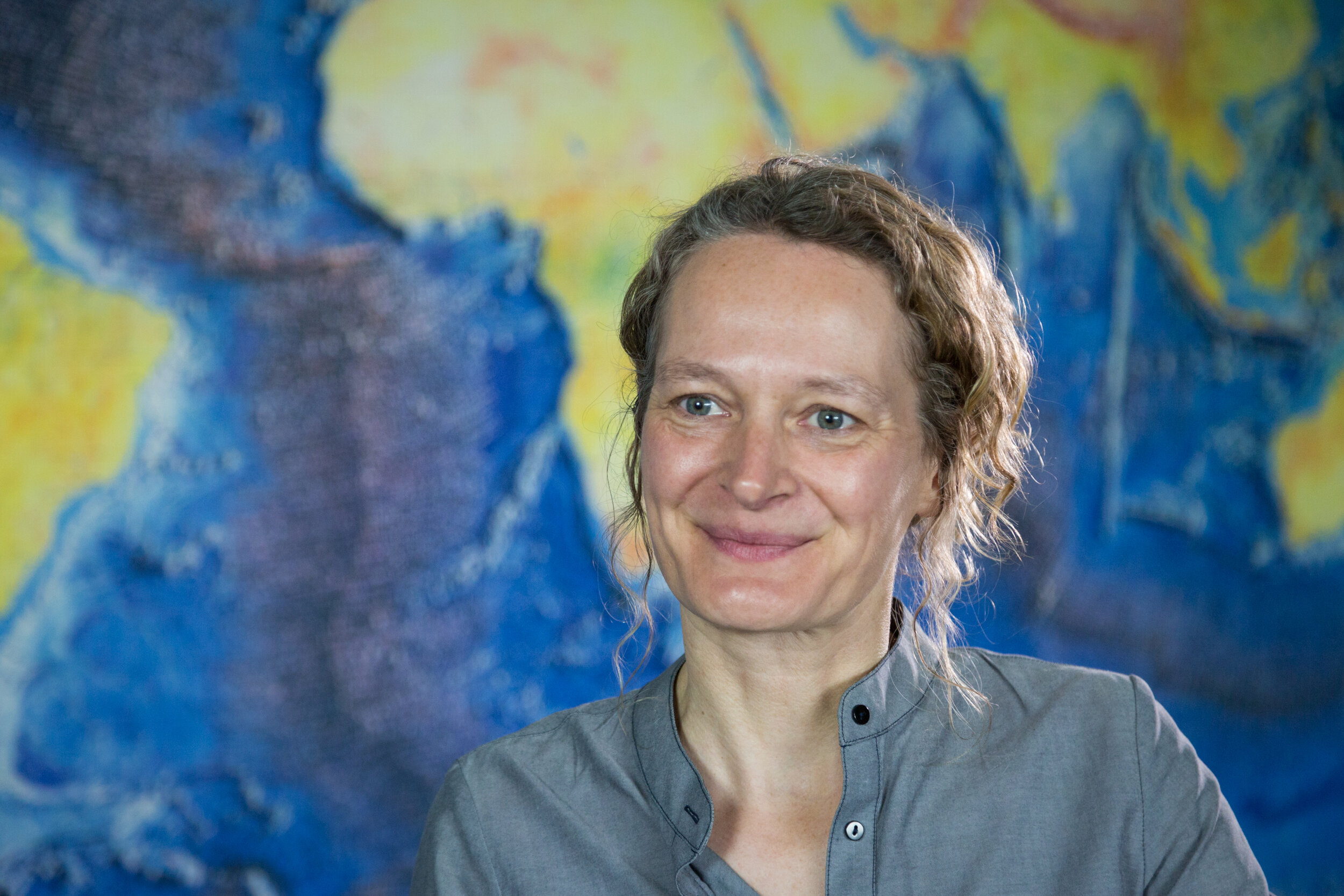Bärbel Hönisch on Reconstructing Climate in the Distant Past
Bärbel Hönisch is Professor of Earth and Environmental Sciences at the Lamont-Doherty Earth Observatory at Columbia University. She reconstructs past Earth environments over geological time using a number of tell-tale signatures in the geological record.
Courtesy of Francesco Fiondella
Listen to the podcast here or wherever you listen to podcasts.
Scroll down for illustrations that support the podcast.
Note - playing the podcast is not supported on Internet Explorer; please use any other browser, or listen on Spotify, Apple Podcasts, etc.
Podcast Illustrations
Photomicrograph of a living Orbulina universa foraminifer consuming a brine shrimp (left) captured by its sticky filaments. The brown circle is the calcium carbonate shell, about half a millimeter in diameter, which is what is preserved in ocean sediments when the organism dies.
Courtesy of Howie Spero
Photomicrograph of a skeleton of a foraminifera species called Morozovella velascoensis from the eastern Indian Ocean. Bärbel Hönisch used this species in her work to reconstruct ocean acidification that took place about 56 million years ago during an event known as the Paleocene-Eocene Thermal Maximum.
Courtesy of Olsson et al. 1999 from the Paleocene Atlas
Planktonic foraminifera from a Pleistocene sediment taken from a core drilled on the Sierra Leone Rise. It includes several different species. A single species and a restricted size range are selected for the quantitative analyses of climate proxies.
Courtesy of Bärbel Hönisch
Deep-sea sediment cores cut in half to show sections of the Paleocene-Eocene boundary - 56 million years ago. Such cores are a common source of the foraminifera used by Bärbel Hönisch in her climate reconstructions.
Courtesy of James Zachos
The JOIDES Resolution is a research vessel that drills into the sea floor to obtain sediment cores, such as the ones illustrated above. Most of the sediment cores that Bärbel Hönisch works on have been drilled by this ship.
Credit: International Ocean Discovery Program
The mass spectrometer that Bärbel Hönisch uses to measure the ratios of various isotopes such as boron 10 and boron 11 in foraminifera skeletons.
Courtesy of Bärbel Hönisch







